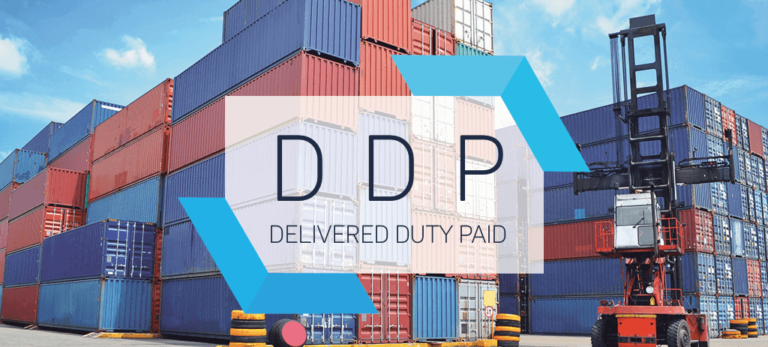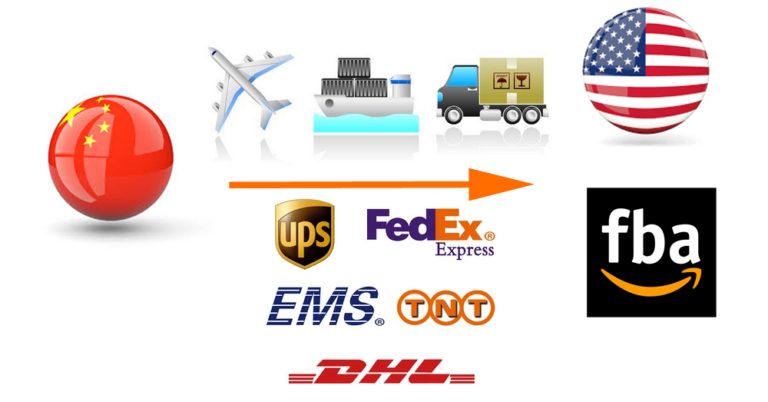DOCUMENTS REQUIRED FOR EXPORTING & IMPORTING

Entering international markets is an important stage in the activities of any organization. Getting to the point where you can export and sell products abroad requires a lot of hard work. It is necessary to do an excellent job of collecting information on competitors, to conduct research on your niche, to understand what goods you will sell, how much it will cost, and, most importantly, what are the ways to bring it to the international market.
Exporting abroad will require following specific customs regulations of the destination country. Let’s understand what an exporter needs to know when sending cargo to another state.
First, entrepreneurs must gather a set of necessary documents to ensure the cargo is successfully passed through customs. A particular set of documentation is needed to ensure safe exports and to keep statistics on the importation of the goods at the state level.
Inland Bill of Lading
A domestic shipping company provides this type of document to transport shipments within the same country. It defines the terms of the contract and serves as proof that the merchandise has been accepted for shipment. This document plays a vital role in the shipment of goods.
The inside bill of lading often includes elements such as:
- Addressee names: The BOL identifies the sender (the party sending the goods) and the consignee (the addressee).
- Shipment Characteristics: Contains details about the commodities being shipped, including their type, volume, weight, and configuration.
- Start and end points: The document specifies the point of origin (where the goods being transported were loaded) and the point of destination (where they will arrive).
- Carrier Information: Details of the company responsible for delivering the shipment.
- Route Plan: Provides information about the shipment’s route and stops.
- Method of shipment: This section describes the mode of transportation, whether by rail or road.
- Rules of carriage: The BOL usually specifies the terms and conditions of carriage, often referring to the globally recognized Incoterms terms of trade.
- Freight Costs: This document shows the costs that apply to the carriage and transshipment of the cargo.
- Container or inventory numbers: If necessary, container or other equipment numbers are given to track the shipment.
- Dates of shipment: the day the cargo was transshipped aboard the transport is recorded.
Sea Bill of Lading
It serves as proof of receipt of products and as a contractual agreement between the shipper and the freight forwarder, fulfilling several functions within a single document. This type of official document includes essential information such as the type and quantity of goods, the point of arrival, and the terms of transportation.
When goods are shipped from one point to another, whether within the same territory or internationally, the BOL is a document handed over by the seller to the buyer (the sender of the goods). The document sets out the terms and conditions of the contract of carriage and contains the information necessary for the parties to the sea transportation.

Proforma invoice
It is the original form provided by the sender to the receiver. The invoice details the products, their price, and the sale rules.
The selling firm provides a commercial offer using a proforma invoice in international transactions. This is because potential international buyers may need the proforma invoice for various tasks, such as raising funds, issuing a letter of credit, or processing import declarations.
The proforma includes the following data:
- Full names of the parties involved in the transaction.
- Exhaustive information about the goods being sold.
- Designation of the commodity position in the Harmonized System.
- The amount of the price.
- The order of payment for the product is established within one of the main conditions of Incoterms.
- Delivery features, including how and where the order will be shipped and associated costs.
- The currency specified in the quotation includes U.S. dollars or other currency.
Remember to add a date and specify the validity period on the invoice. The export procedure is subject to inevitable fluctuations, so it is advisable to reduce risk by setting a specific time interval.
Commercial Invoice
In the course of preparation of cargo for shipment, there is a need to execute the documentation accompanying the goods in transit. The most crucial document is the commercial invoice.
This document reflects export operations from shipment to receipt of the load by the consignee. The invoice contains a list of items to be supplied, their value and quantity, and the amount of payment to be made by the buyer. In addition, it details the product characteristics and terms of sale. Customs officials use this document to calculate import duty rates.
This document is critical because it contains essential cargo data and instructions for the buyer, freight forwarders, customs officials, import agents, bank representatives, trucking companies, etc. Special invoices may be required in different states. If they are in place, businesses can avoid costs or delays in shipment if everything is completed accurately.
Export Packing List
Technically, the document is an itemized characterization of the container’s packaging or contents being shipped abroad. It gives valuable information to people and entities involved in the transportation process, including freight forwarders, clearance officers, carriers, and the consignee at the point of destination.
This list includes:
- Sender information: The name and contact of the exporter (address and telephone numbers). This helps to identify the consignor’s personality and facilitates communication.
- Consignee details: The recipient is the individual or legal entity that receives the load at the final point of delivery. His name, business address, and contact details are crucial for successfully transferring goods.
- Delivery details: This specifies the type of vehicle carrying the shipment (ship, train, truck), flight number, port/airport of departure and arrival. Detailed shipment info is vital for controlling the cargo in transit.
- Package identification: Each pack is identified by a unique number corresponding to its contents. This approach facilitates the accounting of all consignments.
- Shipment content details: Data on each item in the box: name, type, lot, dimensions, how to handle the shipment and weight. Discrepancies between the goods in the shipment and the actual items may incur additional costs.
- Actual weight and volumetric: Each box’s weight and the item’s net weight are displayed here. This allows us to calculate the shipping price and ensure the weight is correct.
- Overall dimensions: The parameters of each box are given, including width, height, and length. These are necessary to calculate the shipment volume and verify that the commodity will fit into the container.
- Type of packaging: The kind of pack used to complete the product, which can be a crate, pallet, or box, is documented. This system enables the correct measures to be taken to repack and store inventory.
- HS, Harmonized System Code or tariff code. It is used for categorizing the products. Specific HS codes are utilized for different items to form import charges and tariffs.
- Additional information: Special instructions or comments concerning packaging, handling, or transportation are included in this item.

Export License
This document grants the sender the right to ship goods to foreign countries. Export licenses are issued for certain types of cargo.
For example, if you import more than $2500 worth of products into the United States, you must create and execute an electronic export document. Such regulations are necessary to keep an accurate count of merchandise imported into the United States.
The document includes the date of clearance, the place of origin and arrival, shipper and consignee identification, the price of the items, and the commodity code.
Air Waybill
This is a transportation document that is used for air freight shipments. It is a contract to perform transportation between the seller and the airline. IATA governs the rules of air shipping – the International Air Transport Association.
It acts as a receipt for the goods and a transportation contract between the sender and the carrier. The document contains information about the buyer and seller and the quantity and value of the goods being transported.
Key points that are most often present in AWBs:
- Product sender and consignee information: contacts of both parties are given here.
- Cargo data: a detailed description of all transported products – type, size, weight, and handling features.
- Origin of products and point of arrival: where the shipment was loaded on the airplane from (country of departure) and destination (state of delivery).
- Flight details: Flight details, the route followed by the goods, flight identifiers, departure, and landing airports, stops or connections en route.
- Terms of carriage: these are drawn up based on international Incoterms, which dictate the rules and obligations of each party.
- Transportation Costs: shipping costs, including prepayment or collecting debts.
- Declared Value: an indication of the stated price of the items. If the goods are damaged or deteriorated, the sender may request the carrier to refund its value.
- Transportation and storage recommendations: The document may include special instructions for handling, storage, and care of the shipment.
- Air waybill obligations: The document describes the functions and requirements of the carrier for the transportation of the units.
There are different forms of airway bills, negotiable or non-negotiable. A negotiable air waybill authorizes the shipment transfer to another person, while a non-negotiable air waybill is usually in the consignee’s name and cannot be transferred.

Certificate of Origin
This indicates the country of manufacture of the product. Some countries have special reduced tariff rates or trade agreements based on where the products are manufactured, so this certificate is critical in the customs clearance process and in determining the duties’ level.
Even though the place of origin may be listed on the commercial invoice, you may still be asked for a certificate of origin. The U.S. Chamber of Commerce issues this certificate for items made in the United States.
Certificate of Conformity
It certifies that products for export meet the quality and safety standards established in the importing state. The document assures that the items comply with the rules and regulations of the host country’s market.
Many cities restrict the use of this standard to certain types of merchandise, such as vehicles. In contrast, Kuwait, KSA, Syria, Algeria, and Yemen require a CoC or Certificate of Conformity for most imported goods.
Inspection certification
A certificate is sometimes required to confirm the quality, volume, or technical condition of commodities for export. Inspection personnel can issue it to verify that the goods meet the required parameters.
Insurance certificate
This is proof of an insurance policy to demonstrate that the products are protected during the delivery process. The certificate guarantees that the company providing the insurance will indemnify for possible loss or damage to the shipment.
MSDS – Material Safety Data Sheet
Particular forms and documents are required for the export of dangerous cargo. This protocol is needed for “dangerous goods” or hazardous products.
The safety data sheet defines the hazardous cargo category and describes the nature of hazardous materials, handling regulations, and safety measures for handling. Compliance with these guidelines is essential to ensure the safety and fulfillment of regulatory mandates.
Bank draft
In global commerce, this is a secure payment option – a bank paper assures that the shipper can receive payment after delivering the goods within the contracted time frame. Shippers use bank drafts for safe and profitable transactions in the international market.
To conclude, knowing and adequately preparing the necessary export documentation is essential for exporters to understand the complex scheme of international commerce. Each documentation ensures smooth delivery of goods from one country to another and compliance with applicable laws and regulations. Proper maintenance and systematization of these papers contribute to successful and smooth exports.
By contacting PartnerTrade managers, you can get recommendations on an export package for your shipment. If you have any questions, ask them in the application form below.





